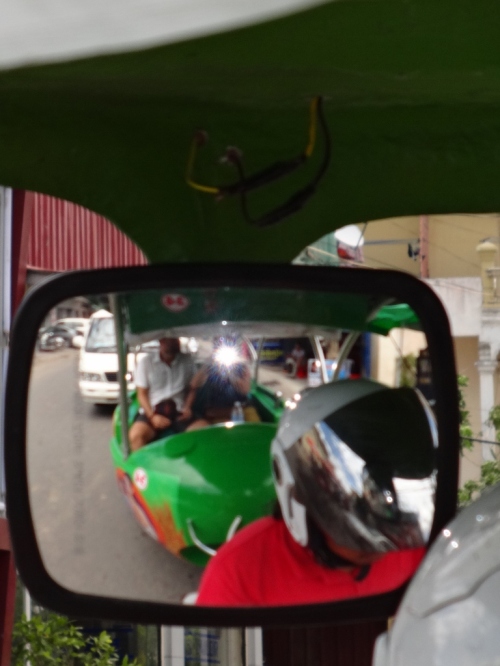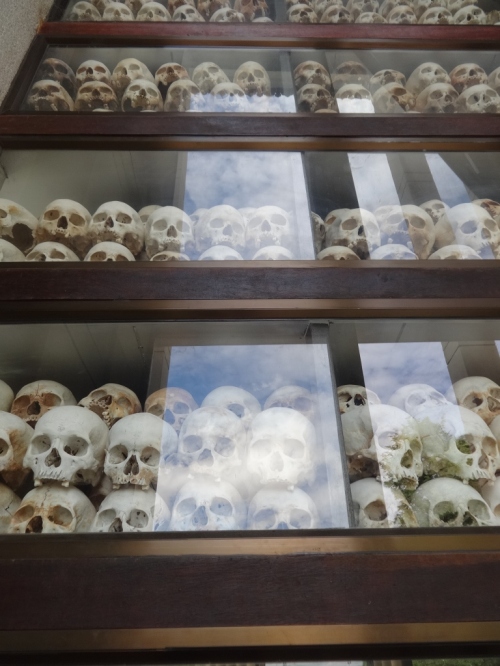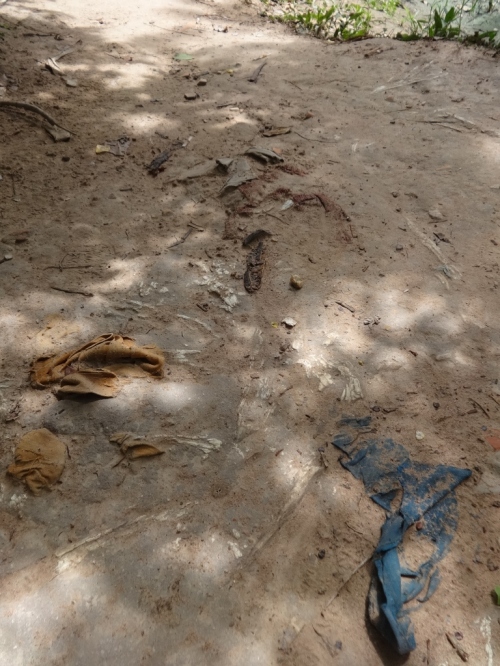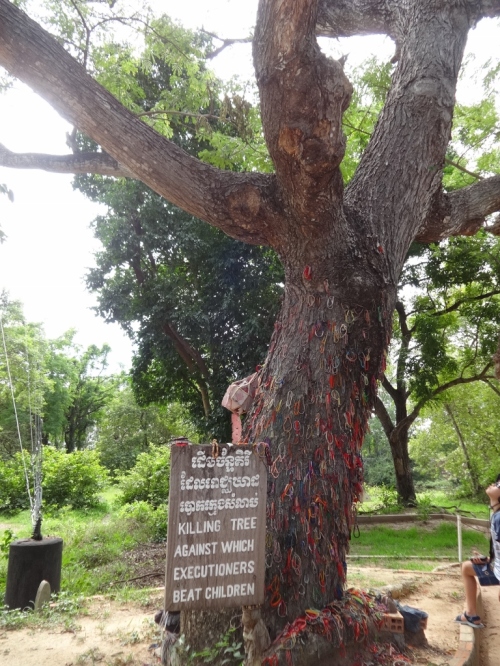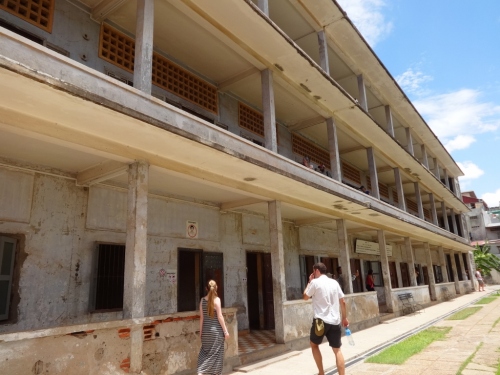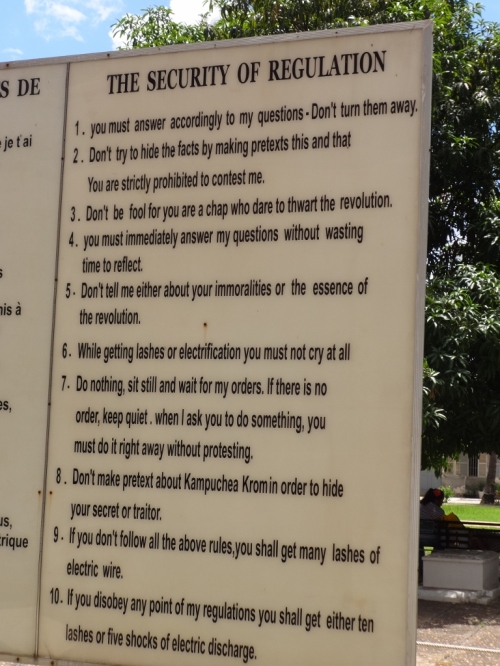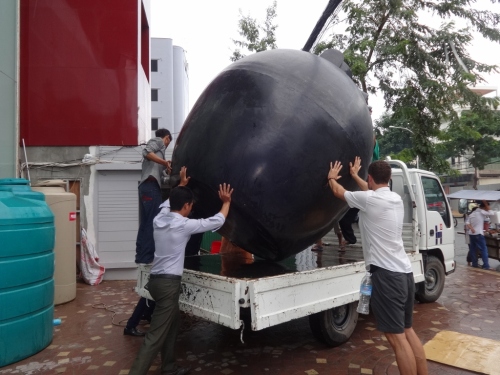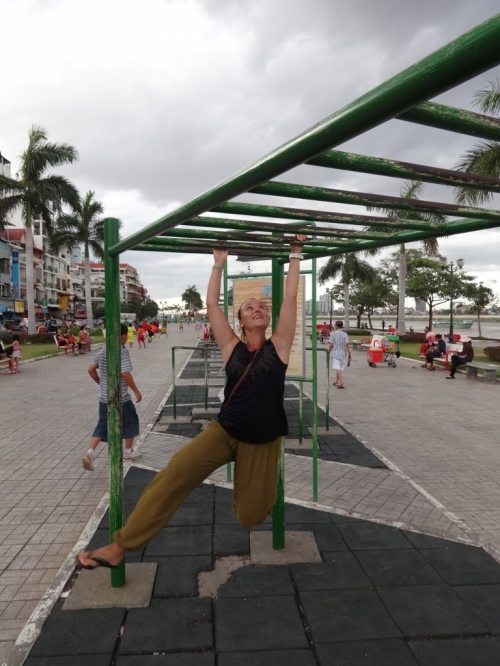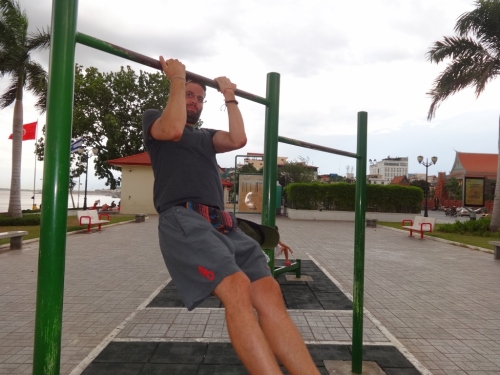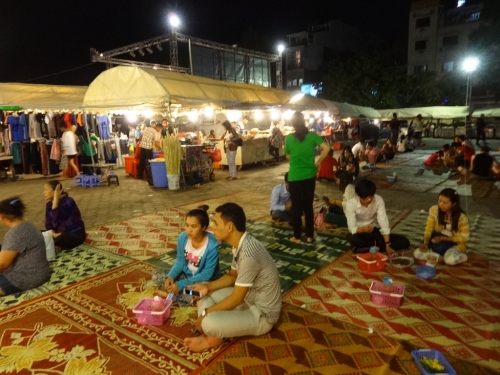Everyone who travels to Cambodia should learn about the country’s recent history. I’m not a big history fan, but in Cambodia’s case, learning about Pol Pot’s Khmer Rouge regime, which only lasted between 1975 – 1979 but had such a big impact on the country and its people, was a given.
Both Tom and I have read “First they killed my father” in preparation for the trip – an emotional story of a young Cambodian girl who has to flee with her family from her home in Phnom Penh when the Khmer Rouge gain power and invade the city on 7th April 1975. Along with millions of other people, they try to escape the leader’s torturous camps, are torn apart as a family and suffer from starvation. Nearly a quarter of Cambodia’s population was extinguished during those 4 years and everyone would have at least one family member, friend or neighbour who didn’t make it.
Once in Phnom Penh, our plan was to dedicate one day to both the Choeung Ek Genocidal Centre, more commonly known as ‘the Killing Fields’ and the famous prison S-21. We arranged with Lucky, our tuk tuk driver we met at the Giant Ibis office, to drive us around in his green bullet and bring us to the airport the next day for a fixed price of 20 USD.
We started with the Killing Fields in the morning. Walking around with our audio guides in what is now a beautifully arranged complex, we learned about where prisoners arrived in truck loads, where they were held like animals in dark sheds, only waiting to be killed soon after. We saw various mass graves and stumbled over bones and clothes rags which, due to erosion and rainfall, emerge from the earth (and are collected every other month by the staff). Every now and then you’d see people listening to their audio guide, sobbing and wiping away tears. It definitely was quite an emotional affair. The most horrific part was probably seeing the ‘killing tree’, where Khmer Rouge soldiers took away the babies from their mums to smash their heads against the tree in order to kill them (“If you want to kill the grass, you also have to kill the roots”).
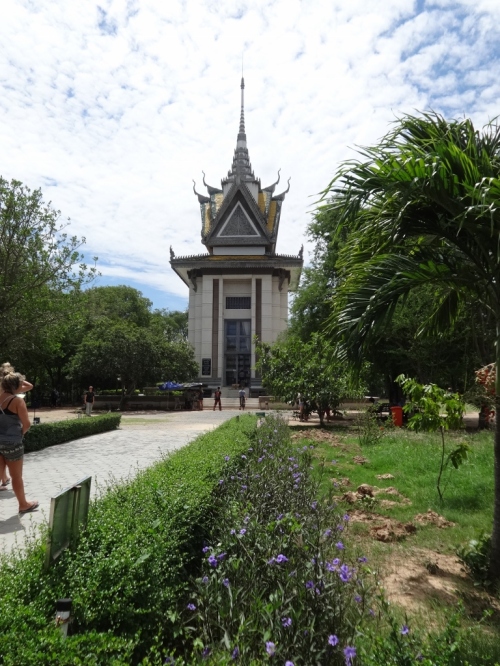
Memorial stupa for the 20,000 people executed at this killing field – one of hundreds across the country.
Hearing these stories and the stories of survivors did make us think a) how lucky we are, b) why this kind of regime couldn’t be prevented or stopped by international powers and c) if there are similar events going on currently somewhere in the world. The answer to the last question is most definitely yes, but what to do? It’s not an easy question to answer…
We continued to S-21, a former school which was transformed into a prison, where army officials, lawyers, professors and other intellectuals were held, tortured and eventually killed or brought to the fields. We decided to get a guide, who told us that she herself lost her father, brother and sister, and only survived at the age of ten because her and her mum managed to escape to Vietnam and live in a camp near the border for 4 years until the Khmer Rouge were defeated. She told us that it was hard working at S-21 and that in the beginning she cried every day. She is fine now though and said it helps that everyone else is in pretty much the same situation.
And this is the amazing thing about the Cambodian people: A whole generation went through that much pain, yet they are the most friendly and smiley people we have encountered on our trip so far. As one survivor, who lives in the US now, put it: Whenever he comes back to Cambodia, his home country, and sees an old woman who has lost her son during that time, he sees her as his mother. When he sees a man or woman at his age, who have lost their parents, he sees them as his siblings. In his eyes the whole generation suffered great losses, but in return gained a big family: all surviving Cambodians. I think this is a beautiful way of putting the cruel past behind.
We spent two days in total in Phnom Penh and whilst it is not the prettiest of cities, it felt like one of the most authentic stays so far (apart from India) as there were not many tourists, but loads of locals to watch and mingle with. We found random street food stalls, got stuck with other locals in the monsoon, helped men lift a water butt onto a truck, did some exercise along the riverfront, bought and (nearly) ate a boiled duck egg with an embryo inside (apparently a delicacy…) and finally got a hair cut at the trendy barber around the corner (Tom).

